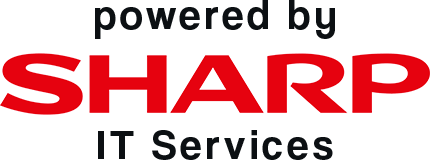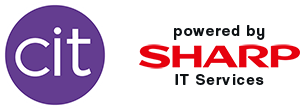Glossary
Address: In IT, address refers to the location of an internet resource, such as email address, website address, and internet address.
Application: An application is a programme designed for a specific purpose, such as graphic design.
Bandwidth: Bandwidth refers to the measurement of the amount of data that can be transmitted over a network at any given time.
Bit: A binary digit of either 0 or 1, it is the most basic unit of data that can be processed by a computer.
Blog: The term blog refers to a webpage that contains entries and links that are updated daily in a journal-like format.
Browser: A programme used to access pages on the World Wide Web.
Business Continuity Plan: A set of documents, instructions, and procedures which enable a business to respond to accidents, disasters, emergencies, and threats without hindrance to key business operations.
BYOD: Bring your Own Device – a business technology policy that allows employees to bring their personal mobile devices to access company email and business data.
Byte: A group of adjacent binary bits that a computer processes as a unit to form a character such as the letter C. A byte consists of eight bits.
Client: A client is a programme or computer that connects to and requests information from a server.
Cloud Computing: Cloud computing is the term used to describe internet services such as online backup, and computer networks that are connected over the internet for storage and disaster recovery purposes.
Compress: Process of making a file smaller so that it will save disk space and transfer faster over a network.
Cookie: A small piece of information that a user may be asked to accept when connecting to certain pages via a web browser.
CPU: The Central Processing Unit – the part of the computer responsible for overseeing all operations and calculations.
CSP: Cloud Service Provider; a company that offers cloud computing services.
Cyberspace: Cyberspace refers to the virtual space in which communication via computer networks occur.
Database: A collection of information organised so that the user can quickly access the information within.
Decompress: The opposite of compressing a file; restoring the file to its original format and size.
Desktop: The working area of a computer screen that contains icons that represent items such as files and programmes.
Disaster Recovery: Disaster recovery refers to the processes, policies, and procedures that are in put in place in case a business’ technology infrastructure is compromised by human-induced or natural disasters.
Domain: The domain is part of an internet web address.
Dpi: Dots per inch; refers to the resolution of a printed image, the higher the dpi, the better the print quality.
E-mail: Electronic email; refers to the exchange of messages between people who have access to the same system or network (often via the internet).
Ethernet: A network technology that allows data to travel at 10 megabits per second by connecting devices to the internet or other network.
File: Nearly all information on a computer is stored within some type of file, it refers to the collection of data, images, and work in all digital formats that relate in some way.
Firewall: A preventative software/hardware for the purpose of blocking unauthorised access to a particular network.
GUI: Graphical User Interface; a design format that utilises a mouse and contains icons, windows, and drop-down menus for the purpose of user-ease.
Hardware: The physical elements of a computer.
Homepage: Typically refers to the first page of a website.
HTML: Hypertext Markup Language; the language used for making web pages.
HTTP: Hypertext Transfer Protocol; the set of instructions that define how a web browser and server interact.
Hyperlink: Clicking a hyperlink with a mouse cursor will open whatever the link connects to, typically another web page of related content.
Hypervisor: A virtual machine manager that allows multiple operating systems to concurrently on a host computer.
Internet: A global network based on the TCP/IP protocol that can connect almost every computing device used today.
IP Address: Internet Protocol Address; every computing device has a unique identifying number when connected to the internet.
Java: A programming language commonly used on web pages that feature animations.
JavaScript: A scripting language used to add dynamic content to web pages.
JPEG: Joint Photographic Experts Group; a type of graphics format which compresses images to some space.
LAN: Local Area Network; a network which connects devices over a small area.
Main Memory: The data physically installed onto a computer sometimes referred to as RAM.
Malware: Malicious programmes or software intended to access or damage information on a computer.
Mouse: A handheld device which gives users control of a computer.
Network: A group of computers that can be of any size and can exchange information.
Online: A term which has come to mean ‘connected to the internet’.
Page: Refers to a HTML document on a particular website or the World Wide Web.
PDF: Portable Document Format; a particular file format which enables the file to be viewed on computers regardless of the programme the file was originally created in.
PostScript: A software that allows documents to be printed on laser printers; a page description language.
RAM: RAM refers to the amount of memory used by programmes on a computer.
Remote Backup: A backup service that provides users with a system for the storage of computer files, usually to keep them safe as ‘backups’ in case the original files are compromised.
Server: A computer responsible for responding to the requests of a client programme or computer.
Software: Software is the coding or programmes that carry out specific functions.
URL: Uniform Resource Locator; a way of identifying items on the internet.
Virtualisation: The creation of virtual versions of something, such as an operating system, hardware platform, storage device or network resource.
VoIP: Voice over Internet Protocol; the use of the internet as a transmission medium for phone calls.
WAN: Wide Area Network; a group of connected computers covering a larger geographical area.
WAP: Wireless Application Protocol; sets of protocols for enabling access to the internet wirelessly.
For a more in-depth IT glossary, please refer to https://www.dataprise.com/it-glossary
References:
https://www.dataprise.com/it-glossary



